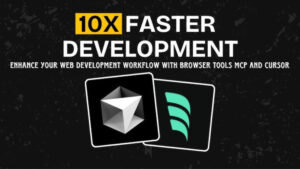The world of Software as a Service (SaaS) continues to thrive, even amidst the rapid advancements in AI. The beauty of SaaS lies in its accessibility and the constant stream of fresh ideas fueled by technologies like OpenAI’s ChatGPT-4o image generation. Imagine offering a specialized image generation service powered by this model at a fraction of the cost of the full ChatGPT suite – that’s the power and profitability SaaS applications still hold.
However, building a robust SaaS application traditionally involves navigating a complex web of core components: authentication (who can access?), authorization (what can they access?), a database (to store everything from user data to generated content), and most crucially, payments (the lifeblood of any SaaS business). Setting up these foundational elements can be a time-consuming and often frustrating process, even with helpful tools like Cursor.
Enter Tempo Labs, a platform promising to streamline the entire SaaS development lifecycle. The demonstration showcased a remarkable ability to integrate these core components – authentication (via Supabase), database (also Supabase), and payments (using Stripe) – in under a minute. This highlights the significant progress we’ve made in optimizing the development workflow, moving away from manual configuration towards automated integrations.
A Glimpse into the Future of SaaS Development with Tempo
The video provided a step-by-step walkthrough of building a gradient wallpaper SaaS application using Tempo Labs. The intuitive interface allows users to connect existing repositories or create new apps from scratch. The core of the process involves a prompt box and clear options for selecting frameworks (Next.js in this case), authentication (Supabase), and payment processing (Stripe).
Setting up the Integrations: A Breeze
Supabase:
Connecting to an existing or new Supabase project involved granting Tempo Labs read and write permissions, a significant advantage over tools that only offer read access. This allows Tempo to automatically create database structures and manage schema migrations. The process involved selecting the organization and authorizing Tempo, after which the project status was confirmed as active and healthy. This seamless connection made all Supabase components, including tables and the SQL editor, accessible directly from the Tempo interface.
Stripe:
Integrating Stripe involved adding API keys (publishable and secret) and a webhook secret. The demonstrator highlighted the necessity of a Stripe business account and the importance of enabling test mode for development. Obtaining the API keys and webhook secret was a straightforward process within the Stripe developer settings. The crucial step was setting up a webhook endpoint in Stripe, with the URL conveniently provided by Tempo. Selecting all events for the webhook ensured comprehensive payment tracking. Tempo automatically detected existing Stripe plans (products) and promised to integrate them into the application’s pricing page. Adding new products in the Stripe product catalog was instantly reflected within the Tempo project.
Building the Application with AI Assistance
The most impressive aspect of Tempo Labs was its ability to generate code and build the application based on a simple prompt. The process began with a Product Requirements Document (PRD), which Tempo used to generate a user flow diagram (using Mermaid syntax) and simultaneously set up the core Supabase project components, including initial migrations, edge functions for payment plans, and checkout features.
The platform then guided the user with template prompts, starting with the landing page development. While the process wasn’t entirely error-free, the integrated code editor and the ability to directly prompt Tempo to fix issues made debugging relatively efficient. The demonstration showcased the potential for rapid prototyping and iterative development.
Key Highlights and Potential:
- Rapid Integration: Setting up authentication, database, and payments in under a minute is a game-changer, significantly reducing the initial setup time for SaaS projects.
- AI-Powered Development: Generating code and UI components based on prompts accelerates the development process, allowing developers to focus on higher-level logic and user experience.
- Integrated Workflow: Tempo keeps all integrations in mind during code generation, ensuring that database structures and payment functionalities are seamlessly incorporated.
- Visual Design Interface: The inclusion of a drag-and-drop design section offers an alternative to pure code-based development, catering to different skill sets.
- Streamlined Payment Implementation: Tempo automatically pulls product information from Stripe and integrates it into the application’s pricing page, simplifying the payment setup process.
Challenges and Future Directions:
While the demonstration was compelling, some challenges and areas for future development remain:
- Error Handling: As with any AI-assisted development tool, debugging and resolving errors will be a crucial part of the workflow.
- Customization Depth: While the platform offers customization options, the extent of control over the generated code and UI might be a concern for developers with specific design requirements.
- Framework Support: While Next.js and Expo were mentioned, expanding support for other popular frameworks would broaden the platform’s appeal.
Conclusion: A Promising Step Towards Democratizing SaaS Development
Tempo Labs presents a compelling vision for the future of SaaS development. By automating the setup of core microservices and leveraging AI for code generation, it significantly lowers the barrier to entry for aspiring SaaS entrepreneurs. The ability to move from concept to a functional application in a fraction of the traditional time is truly revolutionary. While further exploration and real-world testing are needed, Tempo Labs appears to be a powerful tool with the potential to democratize SaaS development and empower creators to bring their ideas to life faster than ever before. The focus on integrating essential components like payments from the outset addresses a critical aspect of building a sustainable SaaS business, making Tempo Labs a platform worth watching closely.



